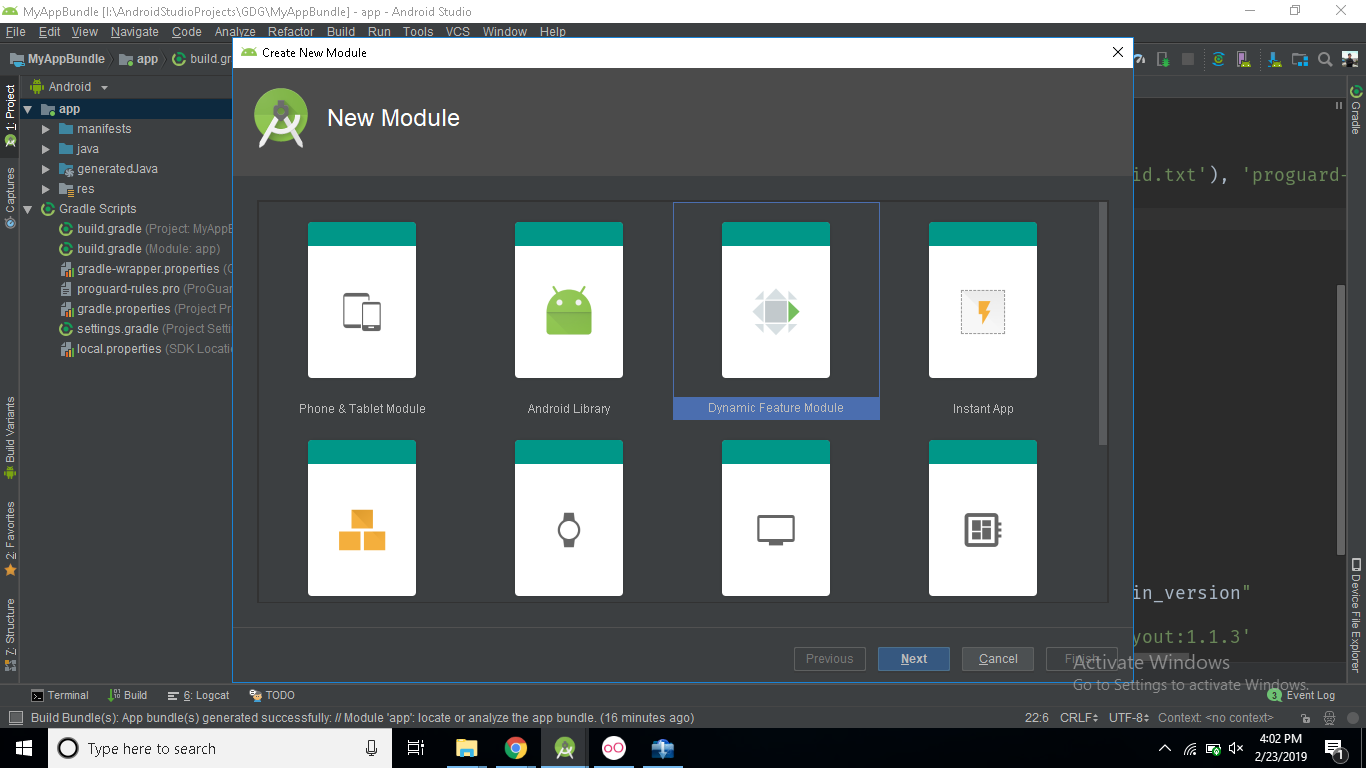Android Modularization Tutorial
When you create new Android project in Android Studio the wizard automatically adds one module for you. Well discover how the architecture results in a clear application structure how navigation is handled how to use staged rollouts how to test everything and even look at a production app that is using this architecture.

A Modular Android App And Dynamic Delivery By Kayvan Kaseb Software Development Medium
Why you should care.

Android modularization tutorial. The SDK streamlines independent units of code into modules where possible and uses interface contracts to connect the modules. The goal of modularization is to enable swapping SDK modules during compilation instead of exposing runtime configuration options and relying on third-party tools to remove unused code. In this page references to modules refer to Gradle modules and not to Dagger modules.
In this article I will try to. Modularization in Android. Under Dynamic features to deploy in the General tab check the box next to each feature module you want to.
Select File New New Module from the menu bar. Using external modules helps you to encapsulate the implementation details of your classes making them available through Provides definitions in local. Splitting your code into external modules can improve the build time of your app and make your code more reusable.
Modularization is a fundamental step in the development process of a project. If the app is modularized in a logical way then individual modules will be the responsibility of a particular team and when working on a feature only a few modules would be affected maybe even only one. Modularization in Android.
From A to Z. Select Run Edit Configurations from the menu bar. The complete code for the examples shown in this tutorial can be found on GitHub.
Modularization in android applications is nothing new I previously outlined the different types of modularization and the advantages they bring over in this post and in this article were going to be focusing on feature modularization. A successful multi-module architecture. You should be wondering what this modularity is all about and how to create a modular application in Java.
Modularization helps the app scale - builds are faster tests are faster and its easier to understand how the app works. I know that build systems other than Gradle exist but they are far less popular so Ill ignore them for the sake of this post Gradle module is basically a standalone project. Instead of producing an Android PacKage apk Gradle would now produce an Android.
Not so long ago we have realized that a mobile application is not just thin-client but its a huge diverse logic which we need to organize. Architecture point of view. In a multi-module project that ships as a single APK with no feature modules its common to have an app module that can depend on most modules of your project and a base or core module that the rest of the modules.
In the first article in this series I provided an introduction to clean architecture modularization and MVVN in Android. When thinking about about modularization at first it may appear as a case of moving a collection of files over. In this article we will try to clear up the confusion around creating modular applications in Java by walking you through a simple example.
This post is part of an in depth series on modularization. During the modularization task we initially replaced gradlew assemble with gradlew bundle. This post is part of an in depth series on modularization.
From the left panel of the RunDebug Configurations dialog select your desired Android App configuration. We say that Android application is modularized if it consists of more than one Gradle module. Modular programming is a software design technique to separate functionality into independent interchangeable modules so that each contains everything necessary to execute a specific functionality.
This is by no means the only way to modularize an app but it does offer some key benefits that we will touch upon later. App Modularization is the process of applying Modular Programming to our Android App. Some steps for creating a dynamic feature module can be mentioned as below.
Then in the Create. A project with multiple Gradle modules is known as a multi-module project.

Membuat Modularization Di Android Resume Gdg Depok Sabtu 23 Februari 2019 By Muhammad Firdaus Medium

How To Build A Modular Android App Architecture

Membuat Modularization Di Android Resume Gdg Depok Sabtu 23 Februari 2019 By Muhammad Firdaus Medium

Github Alexdochioiu Dynamiccakes Sample Android Modular Project Fully Based On The New Dynamic Feature Modules Mvvm And Dagger2